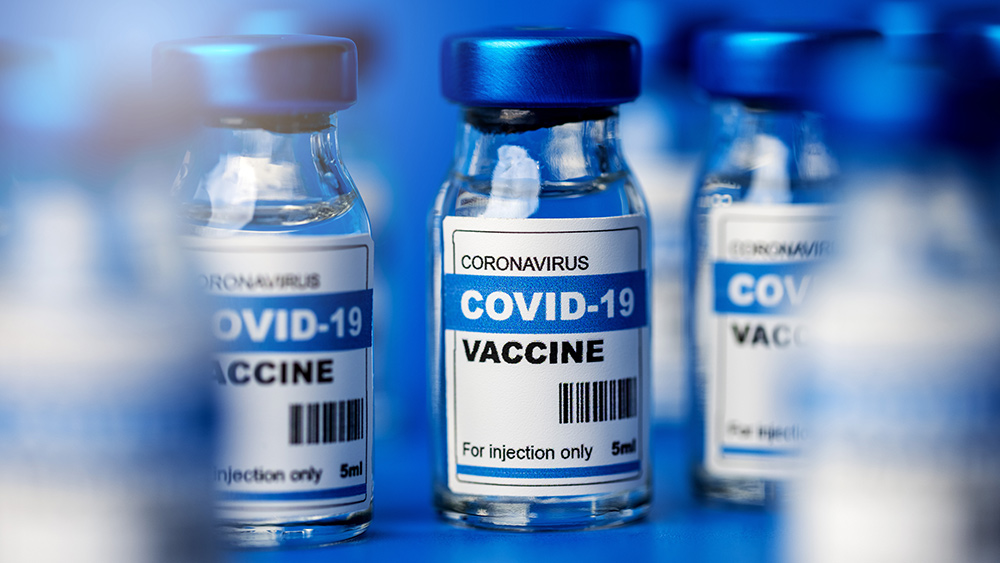A new dawn for medicine: Light-powered micromotors shatter a decades-old scientific barrier
09/29/2025 / By Ava Grace

- Researchers have created the world’s smallest on-chip motors, which are so small they can fit inside a human hair and are powered by beams of light instead of traditional mechanics.
- This breakthrough solves a decades-old engineering barrier where traditional drive trains failed due to friction at scales smaller than 0.1 millimeters, halting progress in micro-engineering for over 30 years.
- The innovation uses light-capturing metamaterials, ditching physical mechanics by coating microscopic silicon gears with nanostructures that convert laser light directly into rotational motion.
- The primary application is for revolutionary medical procedures, such as acting as microscopic pumps or valves inside the human body to deliver drugs with extreme precision or to manipulate cells for advanced diagnostics.
- Significant ethical and safety questions remain, as the long-term biocompatibility and effects of introducing these light-powered machines into the body require exhaustive study and caution.
In a landmark achievement that promises to redefine the limits of medical technology, a team of researchers from the University of Gothenburg has successfully built the smallest on-chip motors in history. These microscopic machines, powered not by wires or batteries but by beams of light, are so minuscule they can fit inside a human hair. This breakthrough, achieved by circumventing a fundamental engineering problem that has stalled progress for over thirty years, paves the way for a future where machines operate inside the human body at the cellular level, potentially revolutionizing drug delivery, diagnostics and surgery.
For generations, the march of technological progress has been toward miniaturization. Gears, the fundamental components of mechanics, are found in everything from wristwatches to wind turbines. For more than three decades, scientists and engineers have pursued the dream of creating functional micro-engines, aiming to shrink these systems down to previously unimaginable scales. Their goal was to build machines that could interact with the biological world on its own terms. However, this progress hit an immovable wall at a size of 0.1 millimeters. The problem was not the gears themselves, but the drive trains—the complex system of shafts, bearings and couplings needed to make them move. At such a small scale, traditional mechanics fail; friction dominates, parts seize up, and constructing these intricate assemblies becomes physically impossible. (Related: New medical technology allows scientists to genetically alter your organs with a single touch… what could go wrong?)
The team, led by researcher Gan Wang, approached this decades-old problem with a radical solution: abandon mechanics entirely. Their innovation lies in ditching the concept of a physical drive train. Instead of trying to build a microscopic engine, they built a gear that is itself the engine. This fundamental shift in thinking is what allowed them to break through the size barrier that had confounded the field for so long.
The core of this breakthrough is a class of advanced materials known as optical metamaterials. These are not typical metals or plastics; they are tiny, meticulously patterned structures engineered at a nanoscale to interact with light in extraordinary ways. Using established chip-manufacturing techniques called lithography, the team fabricated microscopic silicon gears and coated them with these light-capturing metamaterials. Each gear is a mere 16 to 20 micrometers in diameter—a size comparable to many human cells. This manufacturing process is crucial, as it allows for the direct integration of these micromotors onto standard microchips, making them compatible with existing electronic systems.
Precision control with a laser beam
The operation of these gears is as elegant as it is effective. To set a gear in motion, a researcher simply shines a laser beam onto it. The metamaterial coating captures the light’s energy and converts it into motion, causing the gear to spin. The control offered by this system is remarkably precise. The intensity of the laser light dictates the gear’s speed—a brighter beam spins it faster.
The most profound implications of this technology lie in the field of medicine. A machine the size of a human cell could operate within the human body in ways previously confined to science fiction. Researcher Gan Wang envisions these micromotors acting as incredibly precise pumps to regulate the flow of hormones or drugs directly at the site of a disease, such as a tumor. They could function as microscopic valves, opening and closing to control fluid passages with unprecedented accuracy. Integrated into lab-on-a-chip diagnostic systems, they could manipulate individual cells or molecules for analysis, leading to faster and more accurate disease detection.
According to Brighteon.AI‘s Enoch, molecular machines are microscopic structures built from biological molecules like proteins and nucleic acids. They perform specific, efficient functions essential for cellular life, similar to human-made machines.
“We can use the new micromotors as pumps inside the human body, for example to regulate various flows,” said researcher Wang. “I am also looking at how they function as valves that open and close.”
While the potential is staggering, such a powerful technological leap demands careful scrutiny. The introduction of autonomous, light-powered machines into the human body raises significant ethical and safety questions that must be addressed with utmost caution. The long-term biocompatibility of these silicon and metamaterial structures is unknown. The precise effects of internally applied laser light on surrounding tissues require exhaustive study.
By replacing bulky mechanics with ethereal light, they have not only solved an intractable engineering problem but have also illuminated a new path forward for medicine and technology. The journey from laboratory prototype to clinical application will be long and require rigorous oversight, but the destination is now within sight. It is a future where the most advanced machinery is invisible to the naked eye, controlled by beams of light, and working from within to heal.
Watch this video about micromotors and nanomachines.
This video is from Uomini e leoni on Brighteon.com.
More related stories:
Simple invention can seal a gunshot wound in just 15 seconds
New Breathalyzer Technology Detects Cancer, Asthma
Butterflies inspire new LED illumination technology
Sources include:
Submit a correction >>
Tagged Under:
breakthrough, discoveries, future science, future tech, health science, inventions, lithography, mechanics, medical innovation, medical tech, micro-engineering, microchip, micromotor, nanomachines, optical metamaterials, real investigations, research
This article may contain statements that reflect the opinion of the author




















